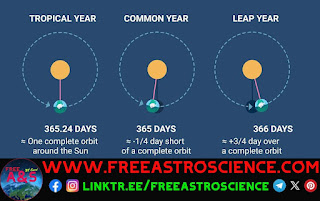The concept of a leap year, which is recognized universally, hinges on the fact that a calendar year typically comprises 365 days. However, every four years, an extra day - February 29 - is added to the year, thereby making it a leap year. Astronomical factors, primarily the Earth's rotation around the Sun, contribute to this phenomenon.
In our daily lives, we use the calendar year, which by necessity must contain a whole number of days. On the other hand, the solar year, which corresponds to the Earth's complete orbit around the Sun and the subsequent return to its original position, is the period associated with the seasonal cycle. The solar year lasts for 365.2422 days.
For the months to consistently align with the seasons without any shifts over time, the calendar year's duration should approximate the solar year as closely as possible. Given that it must be a whole number, the calendar year was historically set to last 365 days.
Despite the small difference between the solar and calendar years, it was significant enough to warrant a change. In 46 B.C, the Julian calendar was introduced, stating that any year divisible by four should have 366 days, thus giving birth to the leap year. Consequently, the average duration of the calendar year over four years became 365.25 days.
This minor discrepancy between the two years continued to accumulate over time. By 1582, the lag had reached ten days. Pope Gregory XIII addressed this issue in 1582 by introducing the Gregorian calendar, which is still in effect today. He decreed a shift from October 4 to October 15, 1582, eliminating the ten-day difference between the solar and calendar years. To further refine the calendar year, a new rule was established and has remained unchanged. Every year divisible by four is considered a leap year, except for centennial years (those divisible by 100) that are not divisible by 400. For instance, the year 2000 was a leap year because it was divisible by 400, but 1900 and 2100 will not be since they are divisible by 100 but not by 400.
This rule makes the average length of the calendar year 365.2425 days - a mere 26 seconds longer than the solar year. The difference is so negligible that the lag time since 1582 is insignificant, and no additional corrections have been deemed necessary.


Post a Comment